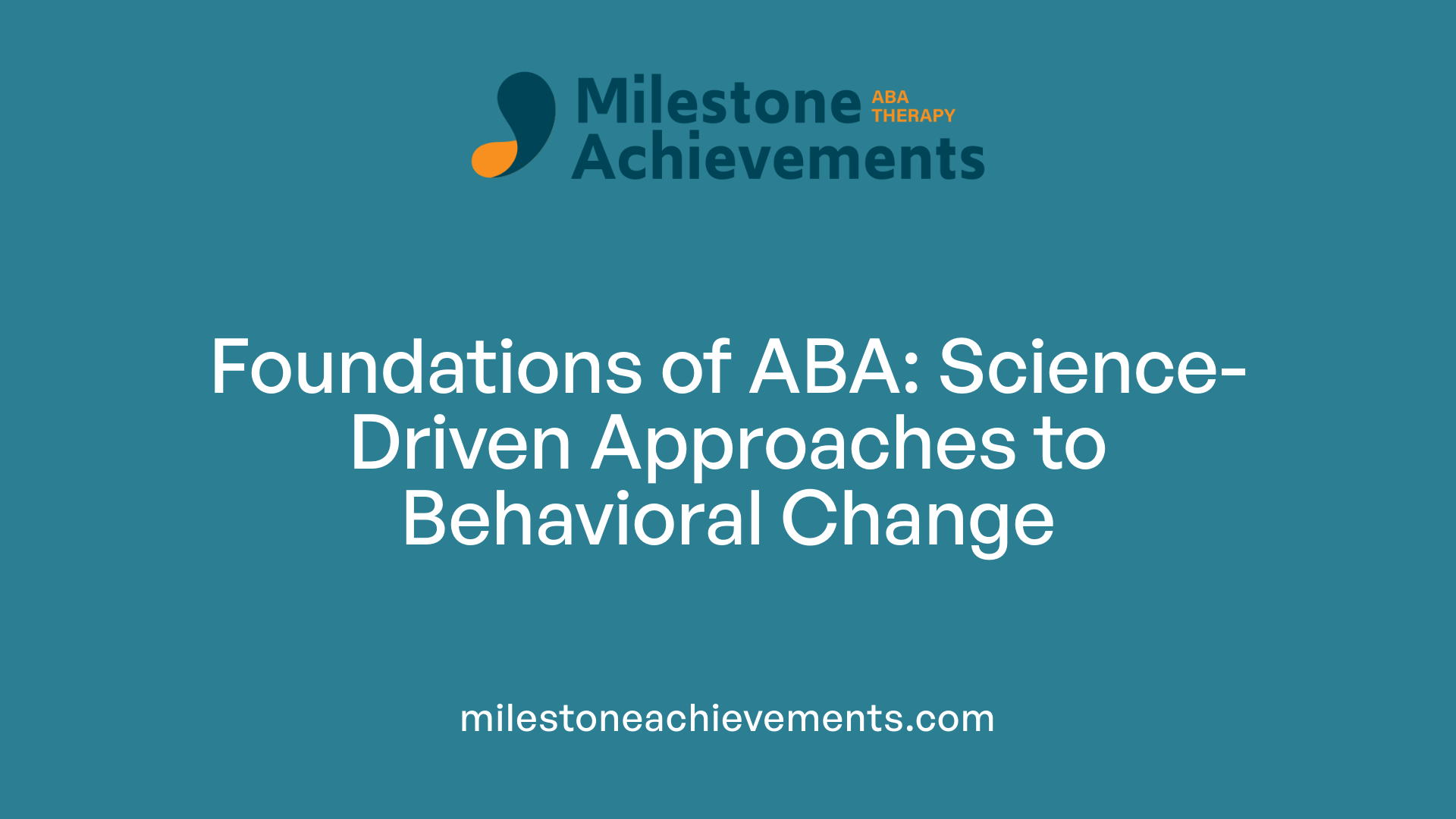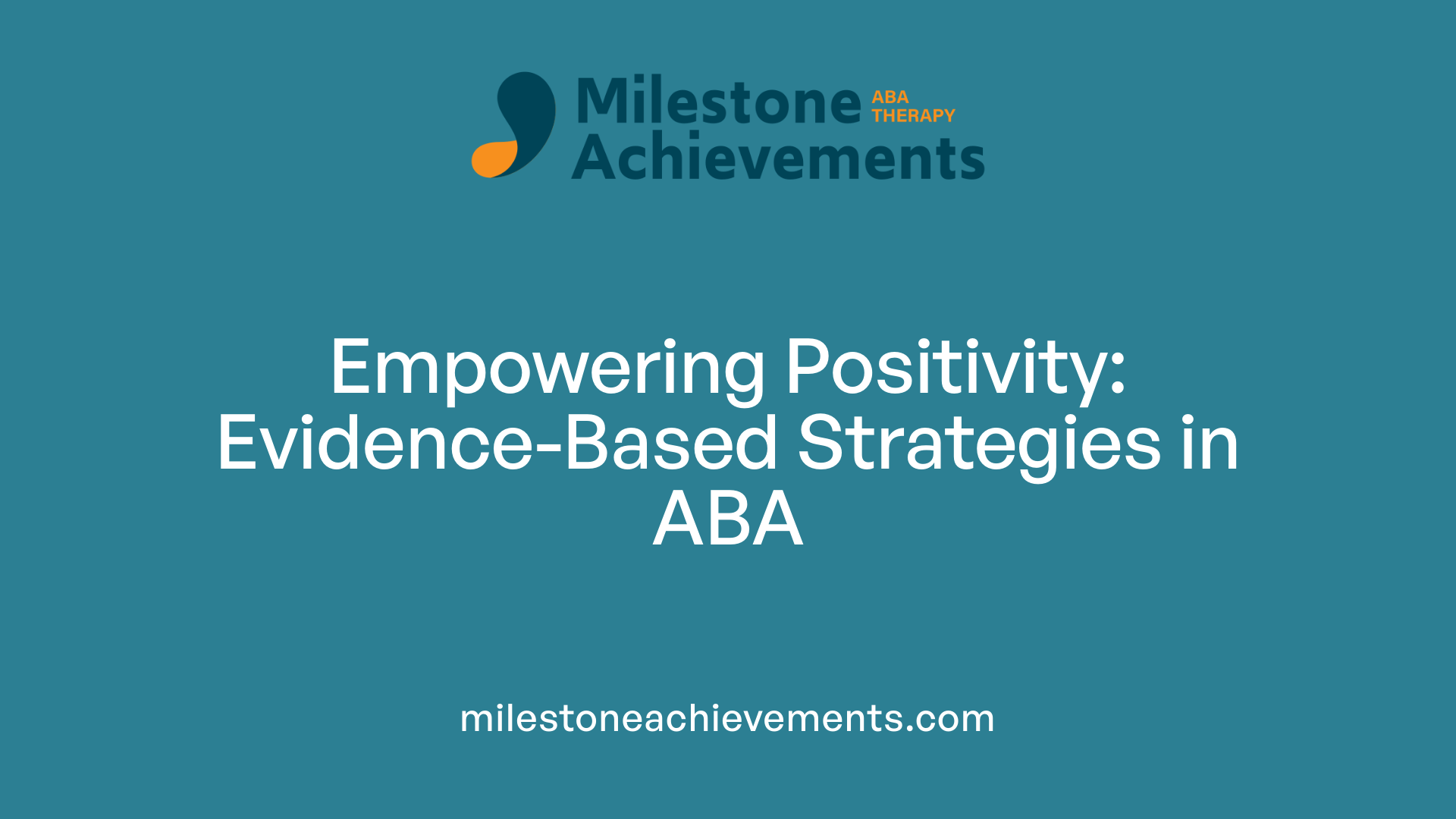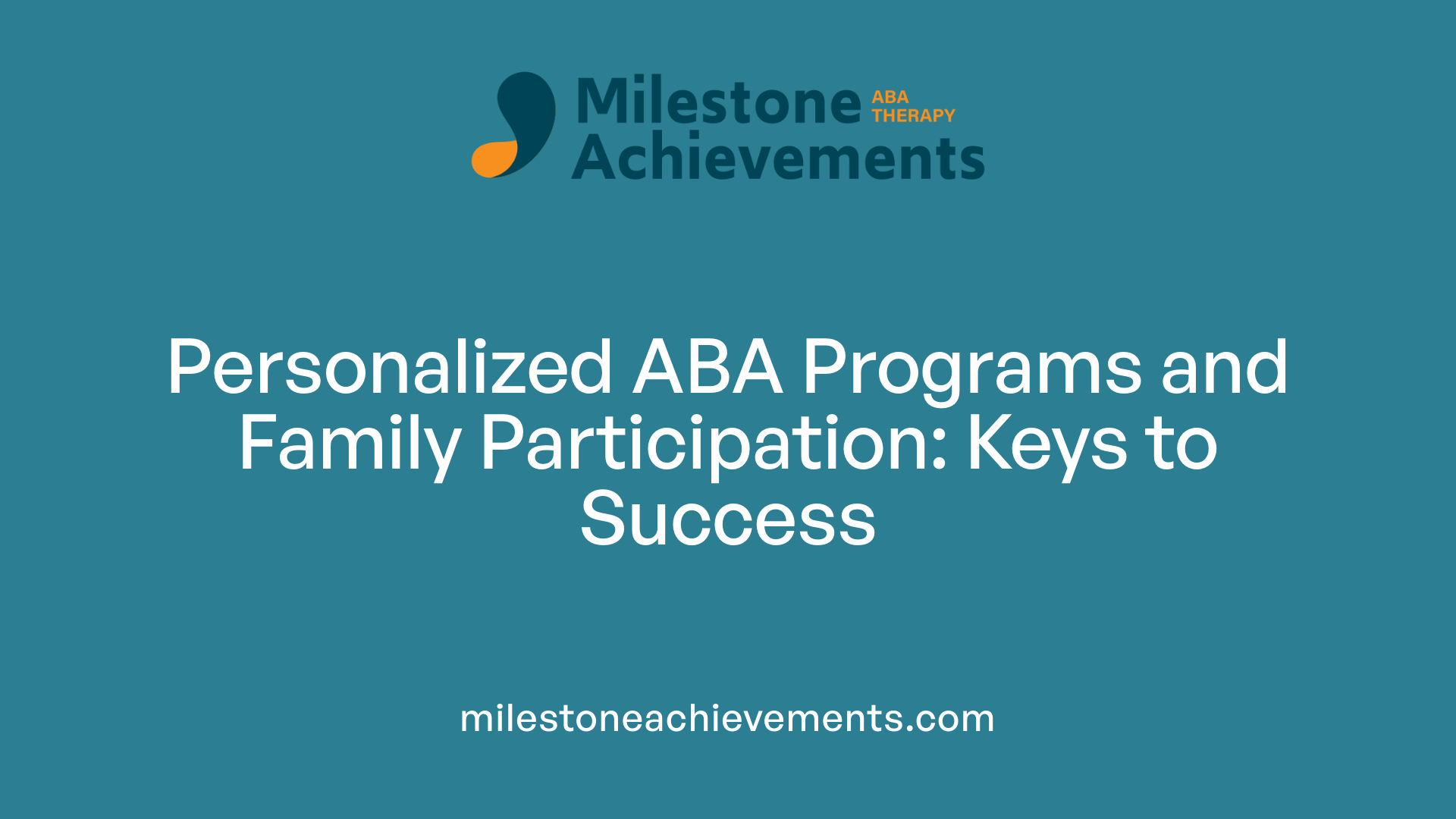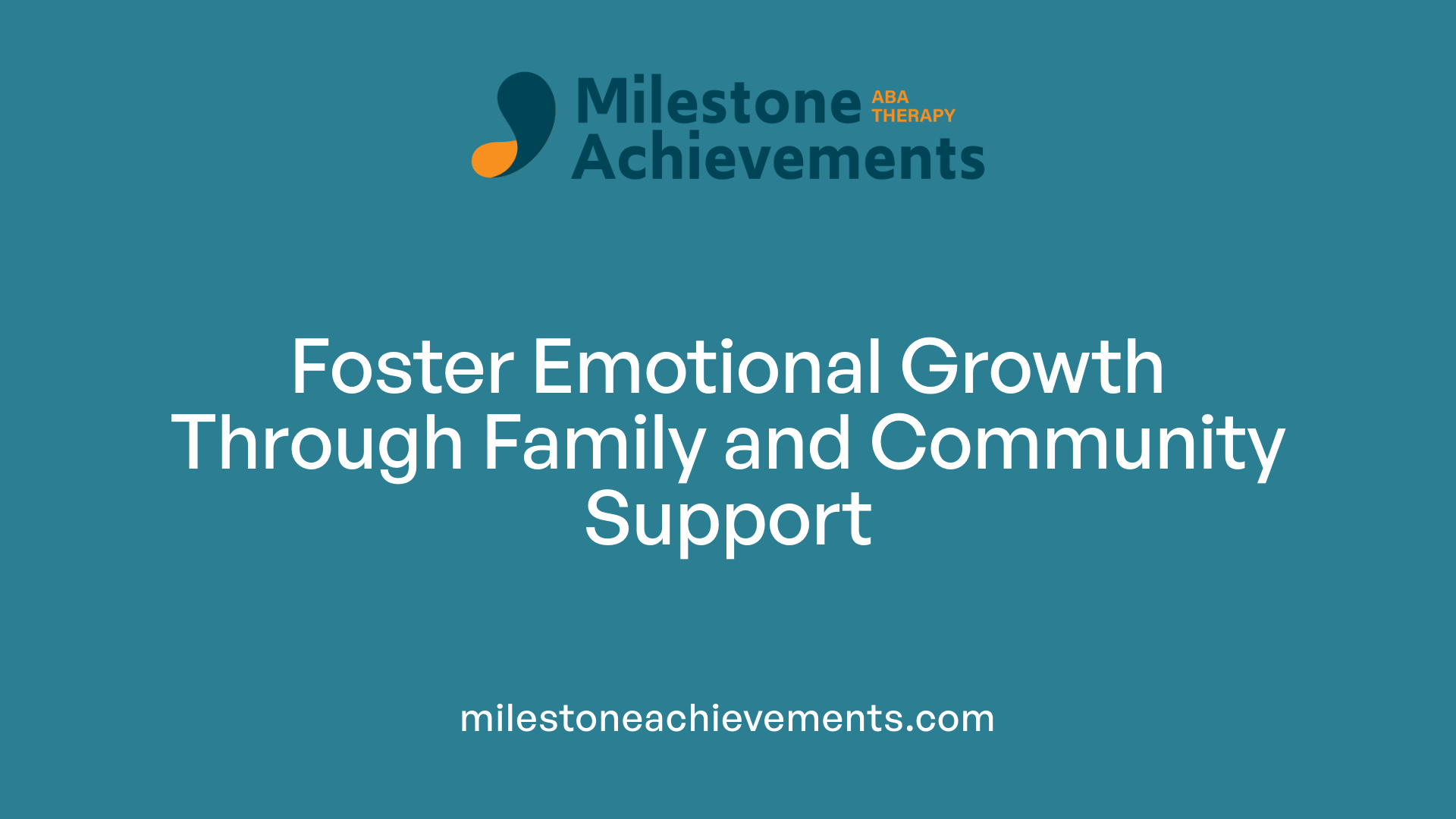
How ABA Therapy Helps with Developing a Positive Mindset and Outlook
Cultivating Positivity and Resilience Through ABA Therapy
Unlocking a Brighter Outlook: The Power of ABA
Applied Behavior Analysis (ABA) therapy is a scientifically grounded approach that has transformed the lives of many individuals with autism spectrum disorder (ASD). Beyond improving communication and social skills, ABA plays a crucial role in fostering a positive mindset and emotional resilience. This article explores how ABA therapy helps individuals develop an optimistic outlook, build confidence, and enhance their overall mental well-being.
Understanding the Foundations of ABA Therapy

What are the principles of behavioral assessment?
Behavioral assessment is the starting point of ABA therapy. It involves identifying specific behaviors to change, understanding what triggers these behaviors (antecedents), and observing their consequences. This detailed analysis helps clinicians develop personalized treatment plans. The goal is to understand how behaviors work within an individual’s environment and to identify patterns that can be modified.
Using behavior charts, direct observation, and data collection tools, behavior analysts gather information on behaviors across different settings. This comprehensive approach ensures that interventions are tailored, targeted, and effective in promoting meaningful changes.
How does data-driven decision-making influence ABA therapy?
In ABA therapy, data collection is central to monitoring progress. Every session includes systematic recording of behaviors, responses to interventions, and skill acquisition rates. This objective data allows therapists to evaluate whether specific strategies are effective or need adjustment.
Regular reviews of this data help make informed decisions, ensuring therapy remains responsive to the individual’s evolving needs. It also provides measurable benchmarks for progress, motivating families and clinicians alike.
What is the science behind learning and behavior?
ABA therapy is rooted in the scientific understanding of how learning occurs through the principles of behaviorism. It examines how environmental factors influence behavior and how behaviors can be shaped by reinforcement or consequence.
By applying principles like positive reinforcement—rewarding desired behaviors—and techniques such as prompting, shaping, and chaining, ABA creates structured learning environments. This scientific basis helps individuals develop new skills, improve existing ones, and reduce problematic behaviors.
How does ABA benefit emotional resilience and positive outlook?
ABA therapy plays an important role in fostering emotional resilience and a positive attitude. It achieves this by promoting skills that boost confidence and independence, such as effective communication and social skills.
Tailored interventions focus on reinforcing positive behaviors, which helps reduce frustration and related negative emotions. Teaching coping strategies and emotional regulation prepares individuals to handle setbacks calmly. As a result, many children and adults build a foundation for resilience, facing challenges with optimism and strength.
Why is ABA considered effective in improving behavioral, social, and communication skills?
Research underscores ABA’s effectiveness, with over 20 studies demonstrating significant improvements. Many children experience a 70-85% decrease in disruptive behaviors, alongside increases in verbal expression (60-80%) and social engagement (65-75%).
By fostering these improvements, ABA allows individuals to participate more fully in social interactions, school activities, and family life. The structured, goal-oriented approach supports long-term growth, making it a respected, evidence-based intervention.
How do behavioral techniques drive change?
The techniques used in ABA—such as reinforcement, prompting, fading, and modeling—are designed to encourage desired behaviors and reduce undesired ones. For example, positive reinforcement rewards helpful behaviors, making them more likely to recur.
Structured interventions like discrete trial training, natural environment teaching, and pivotal response treatment help teach new skills in different settings. These strategies are carefully applied, with ongoing data collection ensuring effectiveness.
What role do families and caregivers play?
Family involvement is crucial for successful ABA therapy. Parents and caregivers learn strategies like positive reinforcement and prompting during training sessions. They then implement these techniques at home, ensuring consistency.
Support groups, training, and counseling further empower families, helping them navigate challenges and celebrate progress. This collaborative approach enhances skill generalization across settings, promoting lifelong habits.
| Aspect | Details | Additional Notes |
|---|---|---|
| Principles of ABA | Behavioral assessment, reinforcement, modeling, prompting | Foundation for tailored therapy |
| Data-driven decisions | Regular data collection, analysis, adjustments | Ensures effectiveness |
| Learning science | Behavior modification via environment and reinforcement | Evidence-based approach |
| Emotional resilience | Building confidence, coping skills, positive behaviors | Supports well-being |
| Typical improvements | Reduced problem behaviors, increased communication and social skills | Measurable progress |
| Techniques used | DTT, NET, PRT, reinforcement, prompting | Diverse strategies |
| Family's role | Training, consistency, supportive environment | Critical for success |
Through its science-backed methods, ABA therapy remains a foundational approach to supporting individuals with ASD and other developmental challenges. Its emphasis on data, customization, and positive approaches helps foster not only behavioral improvements but also emotional strength and resilience, enriching lives long-term.
Techniques That Foster a Positive Outlook

What mechanisms does ABA therapy use to enhance a person's positivity and mental resilience?
ABA therapy employs a variety of techniques rooted in behavioral science to promote a positive mindset and build resilience. One of the primary strategies is the use of positive reinforcement and reward systems. These approaches encourage individuals to repeat desirable behaviors by providing praise, tokens, or other rewards that motivate ongoing progress.
Structured interventions like Discrete Trial Training (DTT), Natural Environment Teaching (NET), and Pivotal Response Treatment (PRT) are tailored to each person’s needs. DTT offers clear, step-by-step instructions, reinforcing successful responses to develop new skills. NET facilitates learning in everyday settings, making skills more functional and relevant, while PRT emphasizes pivotal areas like motivation and response to multiple cues, leading to broad improvements.
Visual modeling and script fading are additional tools that support emotional regulation and social understanding. Visual aids help clarify expected behaviors or emotions, reducing anxiety and increasing confidence. Script fading gradually decreases dependence on prompts, encouraging spontaneous communication and social interactions.
Data from research shows that these evidence-based techniques effectively enhance daily living skills, social engagement, and emotional resilience. They enable clients to better manage their emotions, connect with others, and develop a more optimistic outlook.
Overall, ABA’s use of positive reinforcement alongside structured, individualized strategies fosters behavioral changes that help individuals maintain motivation, cope with challenges, and develop a positive mental attitude, which is essential for long-term growth and well-being.
Individualized Approaches and Family Involvement

How Does ABA Therapy Promote a Positive Mental Attitude and Emotional Well-Being?
ABA therapy fosters a positive mental attitude by emphasizing positive reinforcement techniques. Rewards such as praise, tokens, or access to preferred activities encourage individuals to engage in desirable behaviors, which can boost confidence and motivation.
As a science-based approach, ABA focuses on understanding how behaviors are influenced by environmental factors, including antecedents and consequences. This understanding helps individuals learn emotional regulation strategies and develop resilience.
Improving communication, social skills, and daily living abilities enables individuals to interact more effectively with their environment, leading to increased feelings of success and independence.
Because ABA programs are tailored to each person's strengths and needs, interventions feel relevant and achievable. This personalized approach cultivates a sense of accomplishment, reducing frustration and anxiety.
Overall, ABA’s evidence-based methods support emotional well-being by encouraging positive behaviors, fostering social connections, and helping individuals develop coping skills to handle various emotions, leading to a more optimistic outlook on life.
Customization of ABA programs
Every person with ASD or other developmental challenges has unique strengths, preferences, and challenges. ABA therapy programs are carefully customized by qualified behavior analysts to align with individual goals, interests, and family dynamics.
This customization involves selecting specific skills to target, designing engaging activities, and determining appropriate reinforcement strategies. Regular assessments and data collection guide adjustments, ensuring continuous progress.
Tailored programs address cognitive, communicative, social, and daily living skills, making interventions more relevant and effective.
Family training and support
Family involvement is crucial in maximizing ABA therapy outcomes. Parents and caregivers receive training on ABA strategies such as positive reinforcement, prompting, and behavior management techniques.
Support services, peer groups, and counseling are often available to help families navigate challenges, manage stress, and stay motivated.
Active participation—attending therapy sessions, practicing skills at home, and providing feedback—strengthens the consistency and generalization of learned behaviors.
Fostering a collaborative relationship between families and clinicians creates a supportive environment where progress is celebrated and obstacles are addressed together.
At-home ABA services
Behavioral frameworks enable ABA services to be provided in home settings, allowing children to practice skills within familiar surroundings.
At-home ABA involves direct therapy sessions conducted in the family’s residence, which can enhance comfort and reduce anxiety.
Family members are involved in therapy planning and trained to implement strategies, reinforcing learning across daily routines.
This approach promotes skill generalization, maintains consistency, and strengthens family bonds. It also offers flexibility and convenience, making ongoing therapy more accessible.
| Aspect | Description | Benefit |
|---|---|---|
| Customization | Tailored programs based on individual needs and preferences | Increased engagement and effectiveness |
| Family Involvement | Training, support, and active participation of family members | Better generalization and consistency of skills |
| At-home Services | Therapy provided within the home environment | Comfort, convenience, and skill generalization |
By combining personalized intervention plans, close family collaboration, and at-home services, ABA therapy can significantly enhance emotional well-being and promote a positive, resilient mindset.
Success Stories and Case Examples

What are some improvements in communication and social skills seen in individuals undergoing ABA therapy?
Many children and adults with autism spectrum disorder (ASD) experience remarkable progress in their communication and social abilities through ABA therapy. For instance, some children who initially struggle with receptive and expressive language develop the capacity to participate in conversations, make requests, and understand social cues. Social skills such as turn-taking, sharing, initiating interactions, and recognizing facial expressions and body language often improve significantly. These advancements help individuals connect more effectively with peers and family members, gaining confidence and independence.
How does ABA therapy contribute to the reduction of disruptive or harmful behaviors?
A notable aspect of ABA therapy is its effectiveness in decreasing problem behaviors, which include tantrums, aggression, self-injury, and self-stimulatory actions that interfere with learning and social integration. Using individualized treatment plans, therapists employ techniques like positive reinforcement and extinction to replace harmful behaviors with functional, adaptive ones. Studies show that disruptive behaviors can decrease by as much as 70-85% after consistent ABA interventions, leading to safer environments and better engagement in daily activities.
In what ways does ABA therapy enhance overall quality of life?
Beyond skill acquisition, ABA therapy has a profound impact on the overall well-being and life satisfaction of individuals with ASD. Improvements in communication, social engagement, and emotional regulation contribute to more meaningful relationships and greater independence. Success stories include individuals who have learned to manage their emotions better, engage in community activities, and participate in family routines confidently. These positive changes foster resilience and a positive outlook, helping individuals navigate challenges with optimism and determination.
Examples of positive outcomes include:
| Case Example | Outcome Description | Impact on Life Quality |
|---|---|---|
| A young girl who learned to express herself verbally | Increased verbal communication improved social interactions | She now participates actively in school and family activities |
| An adult with ASD who reduced his self-injury behaviors | Decreased harmful behaviors led to safer daily routines | Increased independence and community integration |
| A teenager who developed social skills like sharing and turn-taking | Better peer relationships and group participation | Enhanced self-esteem and emotional resilience |
How ABA supports developing a positive outlook and emotional resilience?
ABA therapy offers numerous benefits in nurturing a positive mindset and emotional strength. By fostering essential social, communication, and self-help skills through positive reinforcement and tailored programs, ABA helps individuals build confidence and independence. It teaches emotional regulation skills and coping strategies vital for managing negative feelings effectively. As harmful behaviors decrease and social interactions improve, individuals become more optimistic and resilient.
Overall, ABA promotes adaptive behaviors, emotional growth, and resilience, enabling individuals to face life's challenges with hope and confidence. This holistic development not only improves daily functioning but also enriches overall life satisfaction, creating a foundation for a brighter, more positive future.
The Role of Data and Progress Monitoring in Building a Positive Mindset
How does ABA therapy contribute to overall mental health and well-being?
ABA therapy plays a vital role in fostering mental health and emotional well-being in individuals with autism spectrum disorder (ASD) and other developmental challenges. By teaching essential skills such as emotional regulation, communication, and social interaction, ABA helps individuals feel more competent and independent. These skills reduce feelings of frustration and anxiety that often accompany communication difficulties or problem behaviors.
One of ABA's strengths is its evidence-based approach, which actively works to decrease maladaptive behaviors like outbursts, aggression, or self-injury. As harmful behaviors decrease, individuals experience a safer and more positive environment that encourages growth and confidence.
Furthermore, ABA focuses on developing daily living skills, academic abilities, and social participation. These improvements bolster self-esteem and create a sense of accomplishment. When individuals can participate more fully in family, school, and community activities, their overall mental health benefits from increased social integration and personal success.
Early and intensive ABA programs are associated with better developmental outcomes and greater chances of integrating into mainstream settings, which further enhances emotional stability. Overall, ABA empowers individuals by developing healthier coping mechanisms, reducing stress and frustration, and improving their overall quality of life. This comprehensive approach supports lasting mental wellness by ensuring that behavioral improvements translate into meaningful, everyday improvements.
Creating a Supportive Environment for Emotional Development

How can family and community support enhance emotional resilience in individuals undergoing ABA therapy?
Family and community support play a vital role in strengthening the emotional resilience of individuals receiving ABA therapy. A supportive family environment provides consistent encouragement, understanding, and reinforcement of skills learned during therapy sessions. When family members actively participate in training and practice ABA strategies, they help reinforce positive behaviors and create a stable, predictable routine that fosters emotional security.
Community resources, peer support groups, and social activities can further bolster resilience by offering opportunities for social engagement and experiential learning. These settings help individuals practice social skills, build friendships, and develop confidence in real-world situations. Such ongoing support from family and community not only enhances the effectiveness of ABA but also cultivates an environment where emotional growth and resilience are prioritized.
Why is emotional support and stress management critical in ABA therapy?
Managing stress and providing emotional support are important components of a successful ABA program. For children and adults with ASD, learning new skills can sometimes be overwhelming or frustrating. Emotional support from caregivers and therapists helps reduce anxiety and fosters a sense of safety and trust.
Stress management techniques, including calming routines and emotional regulation strategies, are integrated into therapy when needed. For example, using visual schedules or relaxation exercises can help individuals cope with difficulties and avoid emotional setbacks. Supporting emotional well-being ensures that individuals can stay motivated, engaged, and resilient throughout their developmental journey.
How do cultural considerations influence ABA practices?
Cultural backgrounds can significantly influence how families perceive and engage with ABA therapy. Respecting cultural values, traditions, and communication styles helps tailor interventions to be more acceptable and effective.
Therapists should consider cultural norms about social interactions, parenting, and learning when designing individualized plans. Involving families in decision-making and respecting their cultural perspectives enhances engagement and trust. Culturally sensitive approaches also promote inclusivity and ensure that therapy respects the individual’s identity, fostering a positive outlook and emotional resilience.
| Aspect | Description | Example |
|---|---|---|
| Family Engagement | Active participation in therapy | Parents attending sessions and practicing strategies at home |
| Community Resources | Support through social and service programs | Peer groups, community centers, cultural organizations |
| Emotional Support Techniques | Stress reduction and emotional coaching | Relaxation exercises, visual aids, mindfulness |
| Cultural Adaptation | Integrating cultural values into therapy | Respecting language preferences, cultural traditions |
Conclusion: Embracing ABA for a Positive and Resilient Future
What are the benefits of ABA therapy in developing a positive outlook and emotional resilience?
ABA therapy provides many advantages that help individuals, especially children with autism spectrum disorder (ASD), develop a positive attitude and emotional strength. This therapy emphasizes strengthening social, communication, and daily living skills through methods like positive reinforcement, which encourages repeating desirable behaviors.
As a result, individuals gain confidence in their abilities and become more independent. ABA also teaches emotional regulation techniques, helping children manage their feelings and cope with challenges effectively. By reducing disruptive or harmful behaviors, ABA fosters more positive social interactions, leading to improved relationships and emotional well-being.
Furthermore, ABA promotes resilience by encouraging adaptive behaviors and problem-solving skills. Children learn to navigate social situations better, handle setbacks with a positive mindset, and develop persistence. These abilities contribute to a more hopeful and resilient outlook on life.
In summary, ABA’s personalized approach not only addresses behavioral and developmental goals but also nurtures emotional health. It equips individuals with the tools they need to face life's challenges with optimism and resilience, enhancing their quality of life and overall happiness.
Fostering a Positive Future with ABA
In conclusion, ABA therapy stands as a proven, effective pathway for nurturing a positive mindset and fostering emotional resilience. Its grounded, evidence-based strategies not only improve communication and social skills but also instill confidence, independence, and a hopeful outlook. Early intervention, continuous progress monitoring, and family involvement play vital roles in maximizing outcomes. As more individuals and families embrace ABA, the promise of a brighter, more resilient future becomes increasingly attainable. Building on the successes documented through numerous case studies and ongoing research, ABA remains a cornerstone in promoting mental well-being and a positive mental attitude.
References
- Understanding the Benefits of ABA Therapy
- How a Positive Mindset Helps When Facing Disabilities - PediaPlex
- Applied Behavior Analysis (ABA) | Autism Speaks
- What Is ABA Therapy For Autism - Behavioral Framework
- Should I Enroll My Child in ABA Therapy? A Guide for Parents
- ABA Therapy: Definition, Types, Techniques, and Effectiveness
- What Is Applied Behavior Analysis - Exploring ABA Therapy Careers
- 6 Life-Changing Benefits of ABA Therapy for Children with Autism
- Benefits of ABA therapy: 4 benefits you should know


Partner with us on your child's journey
Milestone Achievements offers evidence-based ABA therapy to help children with autism reach their full potential. Together we’ll set meaningful goals and celebrate progress every step of the way.
Start ABA Services Today





